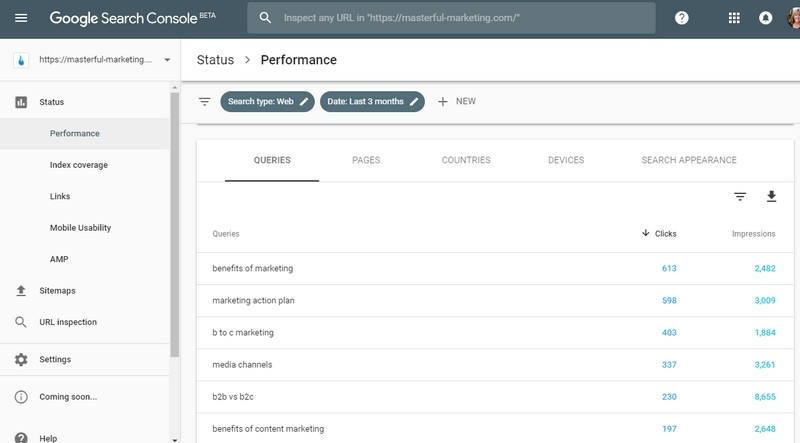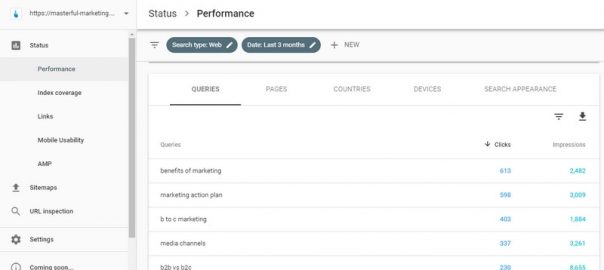— September 10, 2018

When was the last time you searched for your business online and analyzed what you found?
Conducting a web presence analysis for your business is the first step in developing a powerful web presence. By searching for your business as if you were a potential client in search of a product or service, you will experience the first impression others experience when they click on one of your links. Since first impressions matter both online and offline, having this important information can help shape your digital marketing strategy. Otherwise, if you don’t know how others see your business in the search results, you are marketing your business blindfolded.
Why develop an extensive digital footprint?
All businesses should develop an extensive digital footprint as part of your online marketing activities. The bigger the footprint, the more likely your business can be found when someone is searching. If your business isn’t visible in the search engine results, you lose an opportunity to attract a customer.
Think of your online presence as one interconnected network of platforms that provide customer touch points. These can include your website, social media profiles, directory listings and review sites. Each of those touch points must effectively convey your brand to help your target audience get to know you. And each of these digital touch points should link to each other when possible.
What is a Web Presence Analysis?
A web presence analysis is an exercise that helps you determine how your business is viewed when someone searches for your products and services. It answers questions such as:
- Can your business be found when someone searches?
- Is your brand consistent across all of your online properties?
- How does your business compare to your competition?
- What is your reputation among your customers?
- Is your content resonating with your target audience?
- Is it easy to find, connect and contact you?
This evaluation will help you pinpoint areas that need attention. You will be able to develop a better marketing plan that focuses on the right things to attract your ideal customer. The result – marketing activities that improve the effectiveness of your online marketing.
Web Presence Analysis Overview
A web presence analysis should include these 8 items:
- Keyword analysis and research
- Website search engine visibility
- Local citation analysis
- Website structure analysis
- Content review, organization and optimization
- Social media analysis
- Reputation management
- Competitive understanding
To get started and to make this task easier, I suggest you download SEO PowerSuite by Link-Assistant, a set of SEO tools that enables you to gather information about your website and search rankings and those of your competitors. There is a free version available that should be sufficient for most small businesses.
Web Presence Analysis – 8 Step Process
Step 1 – Keyword analysis and research
For your top keyword phrases, where do you rank if at all?
It is important to know what keyword phrases people use to find your business. Keyword research sets the stage for your content, your social media profiles, your directory listings and all of your marketing activities.
One place to start is Google Search Console (formerly Google Webmaster Tools). Google Search Console is a free service offered by Google that helps you monitor and maintain your site’s presence in Google search results. It gives you access to the search queries that are actually being used when users access your site. You need to verify your website in Google Search Console to start collecting this information. You can then export the data into a spreadsheet and use that to start building your list of relevant keywords.

Next, discover more long tail keywords using tools such as Keyword.io or Ubersuggest. These free tools use Google Autocomplete to generate hundreds of relevant long-tail keywords for any topic. Google Autocomplete is the list of phrases that are shown as suggestions to you as you type into the search box.
Not only do you get a great list of keywords to work from, but these can also point you to some content ideas. Ubersuggest also provides search volume, cost per click and competition for each keyword phrase. If you are a tools junkie, here is a list of the top keyword research tools used by SEO experts.
Step 2 – Website search engine visibility
How well can I find you and what is missing?
Now that you have your keywords, check to see how your website ranks for your top keywords. Use Rank Tracker from Link Assistant to get a report on your rankings. Enter your domain name, your top keywords and hit start. It runs a report that will show you how you rank for those keywords in the search engines you select. You can save the report and run it regularly to track how well you are rising in the ranks.
If you are a local business, you can set a specific location for Google. When you run the report, the results will also show if you rank in the 3 pack of local businesses from Google My Business.
Step 3 – Local citation analysis
Where is your business listed online and is the information accurate?
Local business listings and citations are an important component of your digital footprint. Having quality, accurate listings helps your rankings and strengthens your reputation.
Claim and update your business on Google My Business, Bing Places for Business and the Better Business Bureau. After that, find out where you are listed and check to be sure that the information shown is accurate and consistent. To do that, you could:
- Perform a manual search of your business and record what you find.
- Install the N.A.P. Hunter Chrome extension by Local SEO Guide and run it. Export the results into a Google Sheet.
- Engage one of the many companies that offer a paid tool. The notables are BrightLocal, Moz and Whitespark.
Claiming and managing your local business listings has the following benefits:
- Your business is more visible throughout the social web;
- It creates more links back to your website.
- You have control of your listing
Keep in mind that all citation sites are not the same. Don’t get overwhelmed by the shear number of sites. Make sure you pick the right ones for your business and update those listings first. You can find various lists of citation sites, including those by industry, on the Bright Local blog.
Step 4 – Website structure analysis
Does your website lack the proper items help your business be visible?
How your website is structured has a lot to do with how well you will be indexed in the search engines. This may be something you will need help with.
Things to look for:
- Do you have an SSL certificate?
- Is your site mobile friendly?
- Are you using your keywords in the page and post URLs?
- Do you only have one version of the website (either www or non-www) with the one you don’t use redirecting to the other? (Google sees these as different sites with duplicate content.)
- Have you submitted an XML sitemap to Google Search Console?
- Is your site loading quickly and providing a quality user experience?
And there are more things to consider. But you can start with running a Link Assistant Website Audit. This report will give you some of the information that you need to fix.
Step 5 – Content review, organization and optimization
Are you writing content that is relevant to your target audience, easy to find and consume and optimized for proper indexing by search engines?
Content is the foundation of your inbound marketing strategy. In order to attract the right audience to your business, you have to write content that:
- Provides value
- Is what your target audience is looking for
- Educates and informs
- Solves a problem
- Satisfies a need
The internal link structure of your content helps your readers more easily navigate the site. By structuring your content so that it leads the reader from one piece of content to another, you keep visitors on your website longer and send positive signals to Google that the content they found is relevant to their search.
Each piece of content needs to have all the proper on-page SEO elements that can ensure your content gets indexed properly.
Step 6 – Social media analysis
Is your social presence consistent, projecting the same brand and messages?
Analyzing your presence on the social media sites is about brand consistency, message communication and participation across all the sites. Take a hard look at your profiles and make sure you:
- Send the same message to the same audience
- Complete your profiles with consistent information
- Link to all your profiles and your website for maximum visibility
You don’t have to be on all social media platforms, but the ones you are on should project a consistent image.
Step 7 – Reputation
What do your customers say about you?
If you have all great reviews from your customers, that’s awesome. But, you can’t please everyone all the time so you may have a negative review or two.
- Have you checked to see what reviews you have received?
- Are there negative reviews that you need to deal with?
- Do you have no customer feedback at all?
Once we know what is out there, we can create a plan to get more positive reviews, respond to the negative reviews and build a quality brand reputation.
Step 8 – Competitive understanding
How do you compare to your competitors?
Now that you know how you are seen online, compare your results with that of your competition. Review their website and social media profiles for their messages, brand consistency and keyword usage.
- Do you know where you are stronger or weaker than them?
- Are their social profiles more consistently branded?
- Do their messages seem more relevant to your target than yours?
This information helps you determine where you should be channeling your marketing efforts. You can effectively gather that information using Link Assistant’s Rank Tracker. The tool shows the competitors rankings in clear tables, on visual graphs or in a special Competition Rankings Report.
How visible are you?
The visibility of your business is a direct result of your marketing activities. By monitoring your web presence and tracking your progress, you can better understand whether your marketing is working. Conduct your web presence analysis now to set a baseline for measuring your improvement over the next few months. As you increase your visibility, great things can happen for your business.
Digital & Social Articles on Business 2 Community
(114)








